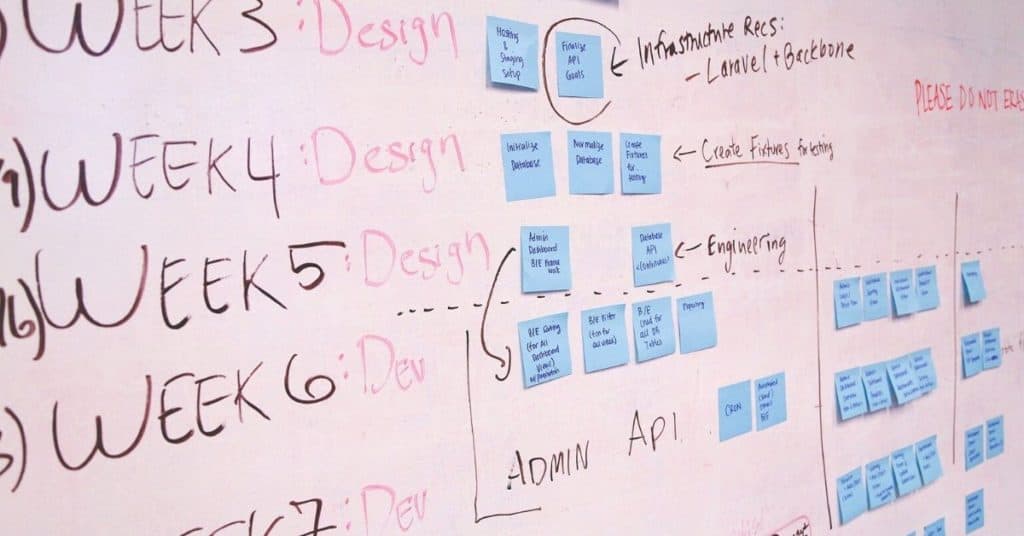Launch Your Business with This Ten Step Guide
The idea may have come to you while working late one night, when you were on the way home after a long day, or maybe it popped into your head during your morning shower.
But wherever it came from; you’ve got an amazing game changer of a business idea.
Starting a business takes time, energy, and dedication. It’s not going to be easy but it can be a rewarding experience unlike any other, one that could lead to you being able to quit your 9-5 job and do something you’re truly passionate about all the while getting to be your own boss.
With this ten-step guide you’ll be able to launch your business from the ground up.
Lets’ get started.
Note: The order of these steps may vary depending on your business
Step One: Evaluate Your Business Idea

One of the biggest challenges in starting a business for many would-be entrepreneurs is coming up with a business idea that is realistic and viable enough to be worth pursuing.
It’s not a lack of ideas that’s the problem so much as being able to find one that works so that’s why the first thing we want to do a part of launching a business is to do a deep evaluation of the business idea to make sure it is something that will work.
The top five elements that make up a great business idea are;
It Solves a Problem
Solving a problem means providing a solution that makes peoples lives easier. If you are able to identify a problem which others don’t see or have learned to just accept as an annoying part of life or of running their business and then find a solution to that problem; you then have a great foundation for your business to grow from.
It’s Not Already Being Done (Or It Is But You Can Do It Better)
If no one else is doing what your business is going to do, meaning no one else is solving the problem your business is going to solve – you probably have a good idea on your hands.
This doesn’t mean every business has to be a one-of-a-kind thing. Many successful new businesses are old ideas improved on, if you see a way in which a business is lacking and think you could improve on their concept (without violating any trademark or copyright elements of their business) you may still have a winning business idea on your hands.
There’s an Audience For It
Whatever business you’re starting you need to have an audience for it. Consider what demographic you’d be targeting and how your product or service is needed by them. How large is that group – how far can your business be scaled?
If you have a great idea that is original and solves a problem but it’s only going to be useful to your neighbor Ted then this idea may not have what it takes to be successful in the long run.
Your Business Idea is Easy to Understand
One test of an ideas strength is its simplicity, consider what the ‘elevator pitch’ is for your business idea, if it’s simple enough that you can explain it in just a few sentences and get people interested you have the makings of a good idea. If, on the other hand, its complicated to a point that you have no idea where to start when explaining it then you still have some work to do ironing out the kinks and fine-tuning your business idea.
In the words of Pete Seeger; “any damn fool can make something complex it takes a genius to make something simple“.
It’s Something You’re Passionate About
Building a business isn’t easy. There will be times when you’ll want to tear your hair out in frustration. This is why it is important that the business you are building is something you are passionate about.
Many entrepreneurs don’t realize the significant amount of time, personal financial investment, resources and energy needed to start even a side-business. Maintaining stamina and having the drive to keep going is necessary to succeed.
You may find yourself working far more than you expected with much less initial cash-flow than you imagined. When you’re working on something you’re passionate about you’ll be less likely to throw in the towel when things get tough.
It’s Definitely Your Idea
If your idea is built around its uniqueness, double check to ensure no one else already went and invented it before you. Do a google search of any keywords or phrases you can think of that may be associated with something similar to your idea or invention, check the United State Patent and Trademark Office and search for any existing patents or trademarks that you may accidentally be infringing on if you pursue this idea. If you are convinced your product is completely and wholly original consider contacting a patent lawyer to get a patent for your idea.
Don’t scrap your plans entirely if you find that there is someone else doing something similar, instead focus on figuring out how you can provide the service they’re providing better or work to adjust your idea so that it targets a more specific market.
Step Two: Pick a Business Name

The name of you business, product, or service can have a massive effect on the level of success of your business. Words are powerful and what you call something can be the difference between a successful business and one that dives headfirst toward bankruptcy.
Good names are memorable and evocative. They grab your attention and stay stuck in your head. The name of your business is likely going to be your first impression with all potential customers.
Avoid hard to spell names or words that may sound like they are spelled differently, this is a particularly important factor if your target market may include people for which English is not their primary language. You don’t want to confuse your customers with the name of your business or have them struggling to say it.
Avoid a name that could be limiting as your business grows, for example if you have dreams of you business being a national brand avoid a name that directly associates it with a specific geographic region.
Once you have a name picked out that you like : Google it. What comes up? If you’re inundated with unrelated searches ask yourself if you’d be able to beat any of those results through SEO (Search Engine Optimization), if not you may want to come up with something more unique.
Check to see if your business name is available to purchase as a .com, as it is the most trusted website extension on the internet. If it’s not available as a .com consider changing the name to something that is available.
Conduct a trademark search to see if anyone owns the word or phrase you want to be the name of your business. You can do this on the United States Patent and Trademark Website here.
One important question to ask when settling on a business name is; can people tell what your business is just by hearing the name of it?
Generally the more descriptive a name the better. This isn’t always the case though, consider Uber, Google, and Yahoo. Sometimes having a catchy and memorable business name is more important than one where it is immediately clear what the business does.
Step Three: Competition and Market Research

Thoroughly research any and all competing products or services that are likely to be the ones your potential customers are choosing between you and them. Do a SWOT analysis of your competition- that is listing out your competitions Strengths Weaknesses Opportunities and Threats.
Important questions that you need to answer prior to your business launching are: Who are your principal competitors? What would give you the advantage over them? What other barriers to entry are their in order for you to compete with them?
Consider how you can compete in regards to the price of your product or service, features, performance, and guarantee.
Step Four: Choose a Business Location (Physical or Digital)

When choosing on a location for your business there are many factors that need to be taken into consideration. If your business will be built around a physical location, consider the local government, economic situation of the area and your potential customers, consider foot traffic, etc.
Each State has its one regulations in regards to income tax, tax credits, minimum wages and other fees. You’ll want to know what these all are ahead of time that way you don’t get blind-sided by an unexpected expense down the road.
Leasing office space can be one of the largest expenses a startup faces. If you’re looking to lease out office space, carefully consider the length of the lease, as your company’s needs may change over time you you may find that you need to move to larger office space but how can you do that if you’re stuck in a lease for longer that you’d like. However a short lease may mean larger rent increases year over year. You also want to know what aspects of repairs, improvements or replacements are covered within your lease and what would you be responsible for.
Consider your online presence: eight of every 10 Americans use social media, so having a presence on popular social media services can be a great idea, the level at which you want to focus on social media depends on the business type. At the very least you’ll likely want to ensure you have a ‘google my business’ listing.
You should also consider creating a website, regardless of what industry you are in people are likely to google your business if they have any questions and having a website of your own is a great way to be right where your your customers are looking for you. Prospective investors, customers, and partners are going to check out your site, and you want to impress them with a professional product.
To get an idea of what information should be on your site check out your competitions website and make not of how there site is laid out and what information they provide. Ask yourself how can your website be better, easier to use/ etc.
If you are able to offer your product online ensure your site is designed in a way to facilitate that, such as having an “add to cart” option and a full checkout system.
If you have no experience making websites consider using Wix – they offer a large selection of easily customizeable templates with their Wix website builder—no coding skills needed. Check Wix out here.
Step Five: Prefect Your Elevator Pitch

An elevator pitch is a brief, persuasive speech that you use to spark interest in what your organization does. A good elevator pitch should last no longer than a short elevator ride of 20 to 30 seconds, hence the name.
To make one start by; writing down everything that comes to your mind about your business and everything you’d want perceptive customers, investors, or partners to know about your product or service.
Once you have all of what you’d want to tell people about your business get down to work on cutting out any jargon or confusing elements. It can take time to craft a perfect elevator pitch, to get it down to the 30 second range you’re probably looking at something that is around 75-80 words long.
Practice your elevator pitch in the mirror, this will help you memorize it while also working out any awkward phrasing so that you can find the best sequence of words to get your ideas across efficiently.
Step Six: Develop a Business Plan

Your business plan is your business’s blueprint. Think about it the same way you would a blueprint for a house: when people want to build a house they don’t just start nailing boards together. First they design the building and create a blueprint. So whether you are planning on starting a small business or looking to expand an existing one your business plan is your road-map to success.
Most new businesses need startup and operating capital to get off the ground. Without a well-developed business plan, there is no chance of getting financing from established financial institutions such as banks or equity financing from angel investors.
Even if you don’t plan on looking for investors for your business, Business plans can be extremely helpful in outlining opportunities and risks, and evaluating what risks are worth the potential reward and which aren’t. They also work to cut off all the wishful thinking and breakdown future business projections into realistic and achievable goals. Business plans can be the light in the dark for businesses if they run into a rough patch a few months in. Investors and financiers are always looking at the risk of default, and word of mouth is no substitute for the facts and figures found in a properly prepared business plan.
A business isn’t static – business plans for any business will change over time as the business develops, and any particular business may have multiple business plans as its objectives change. Some companies create new business plans for the coming year as part of year-end strategy planning.
Great Plan Ray offers a business plan service.
Step Seven: Building a Product

Take the necessary time needed to fully flesh out your business idea and your proposed product or service. Ensure that it is able to stand out from the competition while filling an important need but don’t waste too much time in the research and development phase.
In business you learn by doing, and the best feedback you’ll ever be able to get for a product or service will be from your initial customer base. Depending on the type of product or service that your company is offering advertising a new release as a ‘beta’ version’ can let customers know you aren’t fully done tinkering with the product at the time of this initial release.
The steps outlined here in regards to launching a business double as steps for launching a specific product or service. You’ll want to evaluate your new product idea in the same way you did you business idea as a whole, and when it comes to picking a product name you’ll want to take similar steps as with deciding on a business name; you want something creative and memorable.
Products and services also benefit from having names that have an air of mystery to them. This is why you see services marketed as things like “The Phoenix Method To Get More Clients” or something like that rather than “The Cold-Calling Script To Get More Clients” – one catches your attention and makes you want to know more whereas the other is more descriptive of what it is but less attention-grabbing. Depending on what you are selling this naming strategy may or may not work for you but it is something to keep in mind.
Step Eight: Register Your Business (Permits, Licences, Tax IDs)

By this point you’ve completed your market and competition research, developed a winning business plan, have found investors if needed, and been telling people for weeks about your new business venture. Now it’s time to make everything official.
Depending on type of business the legal structure, financial reporting, and tax filing may vary. Your main options for your personal and legal protection are establishing your business as an LLC (Limited Liability Corporation), an S Corporation, or a C Corporation.
It’s best to avoid establishing your business as a sole proprietorship which can leave you personal property at risk for the debts and liabilities of your business.
For most small business ventures starting out as an S Corporation, wherein you don’t pay a specific tax on the business and instead you report all of the company revenue as personal income and then pay standard income tax on it, if the best place to start. You can then convert your business into a C Corporation once your company revenue goes up and you require more direct separation between you as an individual and your business.
All contracts, invoices, and corporate documents should clearly sate the company name in full including the “Inc.” or “Corp.” suffix. This will help establish the company as a separate and distinct entity from you the individual.
Make sure to keep company funds and taxes separate, as well as all financial transactions. Do not pay employees or private contractors out from your personal accounts. If you blur the line too much between what is your personal bank account and what is company funds you may put yourself at risk of losing personal assets in the event of a lawsuit.
All businesses that plan to pay employees or have already registered as a corporation or partnership must get a federal tax ID aka Employer Identification Number from the IRS. Banks will ask for your EIN when you open a company bank account. You can apply for an EIN online through the IRS website here. You may also need a separate state tax ID that is specific to your company.
If you have specific intellectual property, original product line, or invention , you’ll want to protect that by registering it in one or more of the following ways;
- Copyrights
- Confidentiality Agreements
- Patents
- Service Marks
- Trademarks
Do not neglect to protect your companies unique intellectual property and proprietary information.
Note: Keep track of all expenses you may be paying out of pocket when first launching your business such as; web hosting, web design cost, domain name cost, cell phone use for business, business cards, promotional items, paper, ink cartridges, office supplies, commuter equipment and software, contracted laborer or subcontractors, professional fees for legal or accounting service, mileage driven for business, tolls and parking fees on business trips, office space rentals, etc. as they may be deductible as business expenses come tax time.
Put a Focus on Customer Service

Your small business will have to compete directly with much bigger companies who have more resources at their disposal than you. This is why you need to make customer service your secret weapon, because you are a smaller company with a smaller customer base you will be able to provide extra attention to each customer and make sure that your customers are completely satisfied with the service you have provided them.
You want your customers to be your biggest promoters, you want to have them singing your praises on social media and referring their friends to you. Do everything you can to go above and beyond for your customers and you’ll have a fantastic base to build from. So always go the extra mile for all your customers, it will pay off dividends as your business grows.
Market Your Business Like Crazy

From your company name and logo to the location of your business, your website design, even the clothes you and your employees wear during work hours are all a part of marketing. Every decision you have made up to this point has in-part been a marketing decision and now is the time to amplify your the awareness of your business.
Depending on your line of business, some marketing tactics will work and some will be dead-ends, hopefully you have the wisdom to know which is which. Marketing tactics to make potential customers aware of your business and the product and/or services you offer may include a number of classic low-tech business strategies as well as more modern advertising strategies for the internet era:
Old-School Tired and True Promotion Strategies
- Cold calling prospective clients
- Giving out free SWAG
- Handing Out Leaflets
- Billboard Ads
- Radio Ads
- TV ads
- Listing your business in local directories
- Driving around with a car that has your company logo and information on it
- Offering a free workshop
- Setting up at an Industry Trade-show
Internet Promotional Strategies
- Use Social Media, make accounts on twitter, facebook, instagram, and pinterest
- Connect with Others and Network on LinkedIn
- Build consumer trust on websites like Yelp and TrustPilot by encouraging customers to leave reviews of your business on those site.
- Reach out to popular influencers in your niche and see if there is a deal to be made for them to promote you.
- Contribute to industry-specific forums
- Make sure your business is listed on Google and Yahoo
- Consider running ads on Google, Youtube, or Facebook.
Find more tips on how to market your business in our article on how to Attract New Customers to your Business
In Closing

By following this ten-step guide you’ll be able to launch your business from the ground up. Taking it from concept all the way to opening day, everything you need to build a successful business with a strong foundation can be found in this guide.
Depending on your type of business (and how far along you were in the launch process when you first came across this article) the order of the steps may vary but whether you are building an online business run entirely for you and setting the foundation for a massive business that will one day employ thousands of people this ten-step guide is a great place to launch your business the right way.
- How to Save Money on Marketing (Without Scaling Back) - October 15, 2022
- Become Your Own Marketing Department With These Essential Tips - October 5, 2022
- The 100 Best Money Quotes of All Time - August 16, 2022









Howdy! I know this is somewhat off topic but I was wondering if you knew where I could find a captcha plugin for my comment form? I’m using the same blog platform as yours and I’m having trouble finding one? Thanks a lot!
I just could not go away your site before suggesting that I actually enjoyed the standard info a person supply on your visitors? Is gonna be back frequently in order to investigate cross-check new posts
At this time I am ready to do my breakfast, when having myy
breakfast coming over again to read more news.
Hi there, i read your blog occasionally and i own a similar one and i was just wondering if
you get a lot of spam responses? If so how do you prevent it, any plugon or anything you can suggest?
I get so much lately it’s driving me insane so any support is very
much appreciated.